
Reading Time: 7 minutes
Do you know what fluids does a car need??
Welcome to Car Care Month! It’s the perfect time to give your vehicle some much-needed attention. Today we’re focusing on a crucial aspect of car maintenance: fluids.
In this article, we survey what fluids a car needs, and how to properly maintain them.
A Comprehensive List of Types of Car Fluids | What Fluids Does a Car Need?
To keep your car running smoothly, it’s essential to know about the various fluids it requires. Here’s a handy list of the most important fluids your vehicle needs:
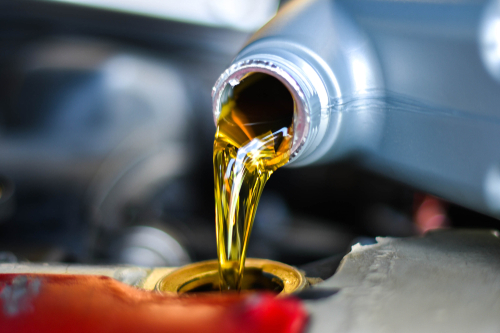
Motor Oil
The lifeblood of your engine! Motor oil lubricates and cools internal components, reducing friction and wear.
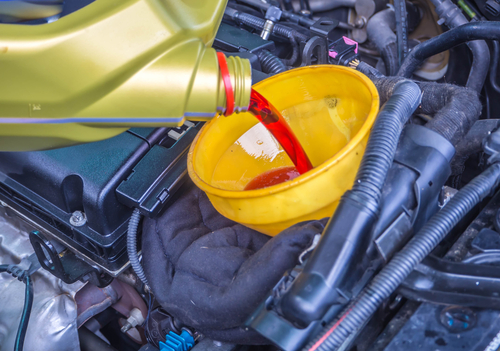
Transmission Fluid
This fluid keeps your transmission functioning smoothly. It helps with gear shifting and prevents overheating.

Power Steering Fluid
Your power steering system relies on this fluid to transmit hydraulic pressure. The result is a steering wheel that turns easily and smoothly.
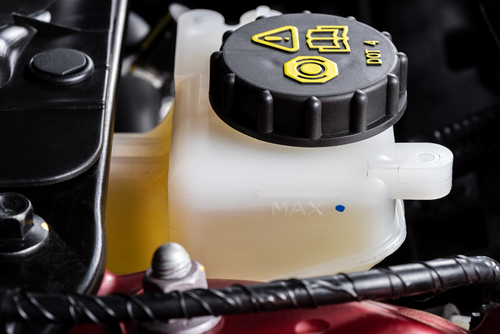
Brake Fluid
A vital component of your braking system. Brake fluid transfers hydraulic pressure from the brake pedal to the brake calipers and pads.
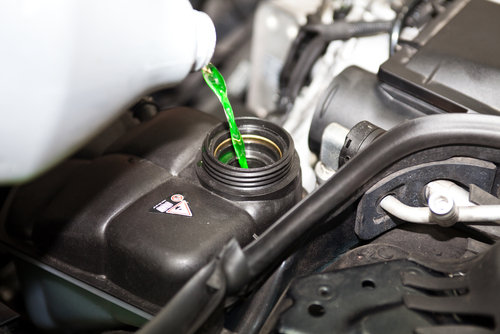
Coolant
Also known as antifreeze. Coolant prevents your engine from overheating by dissipating heat through the radiator.
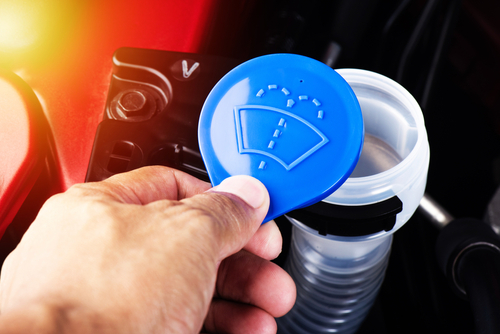
Windshield Washer Fluid
This fluid keeps your windshield clean and clear, improving visibility and safety.
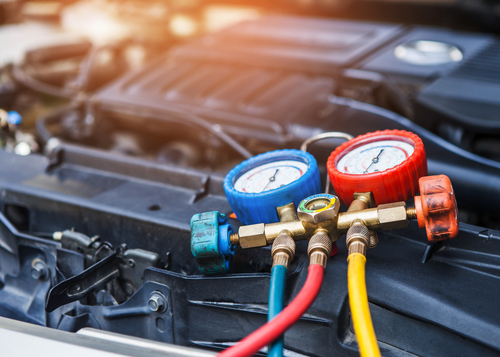
Air Conditioning Refrigerant
Essential for a comfortable driving experience, the refrigerant in your air conditioning system absorbs heat from the cabin and releases it outside, keeping the interior cool and comfortable.
Remember, each type of fluid serves a specific purpose. Hence, maintaining their proper levels and quality is crucial for the overall performance and longevity of your vehicle.
In the next section, we dive into how to check and refill these essential car fluids, so you can keep your ride in top shape during Car Care Month and beyond.
Understand the limits of your own abilities, unless you are a qualified mechanic. Leave complicated car maintenance to the pros. Discover the top 10 car shipping mistakes you should dodge!
How to Check and Refill Car Fluids
Maintaining the right levels of various fluids in your car is essential for its smooth functioning. Here’s how to check and top off these fluids with a touch of creativity:
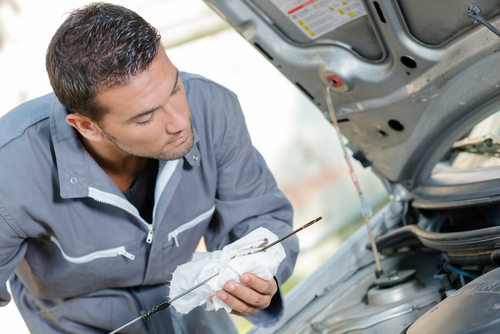
Motor Oil: The Lifeblood of Your Engine
- Find the brightly colored dipstick handle and remove it
- Clean it, reinsert, then pull out to inspect the oil level
- Top off with the recommended oil, if needed
- Keep your engine purring by checking the oil monthly or every 3,000 miles

Transmission Fluid: The Smooth Operator
- Consult your owner’s manual to locate the dipstick
- With a warm, idling engine, remove the dipstick, clean it, and reinsert
- Inspect the reddish fluid level and color
- Add the appropriate fluid as needed and check every six months or 6,000 miles
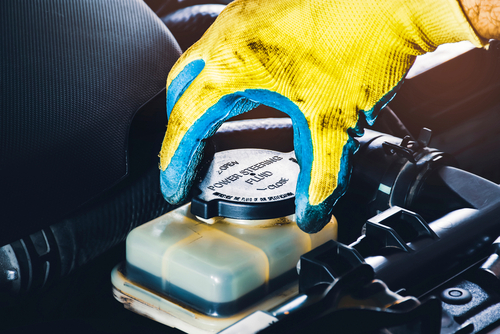
Power Steering Fluid: Turning Made Easy
- Spot the reservoir marked with a steering wheel symbol
- Ensure the fluid level is between the MIN and MAX lines
- Top off with the suitable fluid, if required
- Check every six months or 6,000 miles to keep your steering effortless
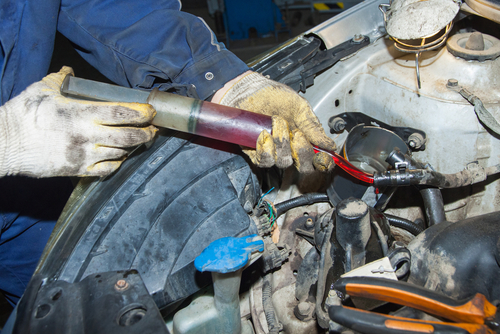
Brake Fluid: Stopping Power
- Locate the brake symbol-marked reservoir
- Confirm the fluid level is within the appropriate range
- Add the recommended brake fluid, if necessary
- Check every six months or 6,000
How Many Fluids Are in a Car | Understanding Their Functions
You might be wondering, “How many fluids does my car need to function at its best?” Well, let’s dive into the roles each fluid plays to keep your ride running like a well-oiled machine:
| Fluid | Role |
| 🛡️ Motor Oil | Your engine’s protector, reducing friction and heat to prevent wear and tear. |
| 🦸♂️ Transmission Fluid | The unsung hero, ensuring your gears shift seamlessly while safeguarding against overheating. |
| 🎯 Power Steering Fluid | Your steering assistant, transmitting hydraulic pressure for effortless wheel turning. |
| ⛔️ Brake Fluid | The guardian of your braking system, helping you stop on a dime by transferring pressure to the brakes. |
| ❄️ Coolant | Your engine’s personal AC, preventing overheating by dissipating heat through the radiator. |
| 🌊 Windshield Washer Fluid | The clarity champion, keeping your view clear and safe by removing dirt and grime. |
| ☃️ Air Conditioning Refrigerant | The ultimate comfort-provider, keeping you cool by absorbing cabin heat and releasing it outside. |
Each fluid plays a vital part in your car’s performance, given this, staying on top of their maintenance is essential. For more information, check out helpful resources from the U.S. Department of Transportation. Remember, keeping your car in peak condition makes your drives more enjoyable. In similar fashion, it also keeps you safe on the road.
Readers also ask: Is Expedited Car Shipping Safe? | Your Comprehensive Guide
Costs and When to Change Car Fluids

Let’s talk dollars and sense. How often should you change car fluids? And, how much does it cost to flush all car fluids?
General Guidelines on When to Change Fluids
Regular maintenance of your vehicle involves more than just oil changes and tire rotations. One critical aspect of keeping your car running smoothly is monitoring and replacing the various fluids that help your vehicle perform its best. Here’s a helpful guide on when to change different fluids in your car, so you can ensure its optimal performance and longevity.
Motor Oil: Every 3,000-7,000 miles, depending on the oil type.
Transmission Fluid: Every 30,000-60,000 miles, or as recommended by your car’s manual.
Power Steering Fluid: Every 50,000-100,000 miles, or when contaminated.
Brake Fluid: Every 20,000-45,000 miles, or when contaminated.
Coolant: Every 30,000-50,000 miles, or as specified in your manual.
Windshield Washer Fluid: Top off as needed.
Air Conditioning Refrigerant: Check and recharge every 2-4 years, or as needed.
By adhering to these general guidelines for changing your car’s fluids, you can help prevent potential issues and costly repairs down the road. Remember, it’s essential to consult your vehicle’s owner’s manual for specific recommendations on fluid changes based on your car’s make and model. Regular maintenance will not only extend your vehicle’s life but also contribute to a safer and more enjoyable driving experience.
What Affects the Cost of Flushing Car Fluids?
The price of a complete car fluid flush can vary depending on several factors. To help you estimate the potential cost, consider the following:
- your vehicle make and model
- labor rates in your area
- and whether you choose to DIY
- or go to a professional.
On average, you can expect to spend between $100 and $400 for a comprehensive fluid flush service. Keep in mind that the cost may vary based on the factors mentioned above, so it’s essential to compare prices and consider your specific situation when budgeting for this maintenance task.
Expert Tip: Don’t forget to consult your car’s manual for the manufacturer’s recommended maintenance schedule. In the event that it differs from the general guidelines provided here, follow the manual.
Remember what fluids does a car need. When you maintain your car’s fluids, you’re being a responsible car owner. So, stay on top of your fluid checks and changes. Doing this will see to it that you have a smooth and enjoyable driving experience. Of course, it also keeps your car in tip-top shape for years to come!
💡 Don’t get stuck with high car repair costs! Discover the cheapest states for vehicle maintenance and expert tips to save money on repairs 🚘🔧👩🔧.
Additional Resources for Car Fluid Maintenance
If you want to learn more about ‘what fluids does a car need’, there are plenty of resources available online. You can check out the Car Care Council’s website for detailed information on car fluids and their maintenance. They have a wealth of information on everything. This includes things like checking fluid levels to when to change fluids in your car.
Additionally, you can explore other articles on car maintenance and safety tips on Nationwide’s blog. They offer a range of topics related to Car Care Month. Don’t neglect your car fluids; take care of them and they’ll take care of you.
Ready to get moving on your PCS and need to ship your vehicle? March over to our comprehensive guide on the Military Vehicle Shipping Process. We’ve laid out all the intel you’ll need for a successful relocation, from selecting a trustworthy transporter to preparing your vehicle for shipment. Our guide is the strategic advantage for every service member’s vehicle shipping mission. Check it out now and move out with confidence!
Know Your Car Fluids for a Smooth Ride
Great! Now you know the various fluids in your car and their importance. You have learnt that it is essential for maintaining optimal performance and longevity. Not to mention that regular checks and maintenance during Car Care Month and beyond, can save you a lot of money and headaches in the long run.
Remember to share this article with your friends and family who might find it helpful. You can also check out other helpful articles on car maintenance on the Nationwide blog.
As always, Nationwide Auto Transportation is here to assist you with your car shipping needs. Whether you need:
- Car shipping
- Open car transport
- Enclosed auto transport
- Door-to-door auto transport
- Classic cars auto transport
- Car buyers auto transport
- Motorcycle shipping
- RV shipping
- Heavy-duty shipping
- Boat shipping
- or ATV shipping, we’ve got you covered.
You are now up to date on what fluids does a car need? Maintaining your car fluids can be an easy and fun experience. Obviously, you need the right information and resources at your fingertips. Let us help you with your car shipping needs, so you can focus on enjoying your ride.
Also Read our post on Car Cleaning Tips
Contact us today for a free car shipping quote. Newsflash! As a first-time customer, you’ll qualify for a 20% discount. Don’t forget to check out our nationwide routes to see if we serve your area.




